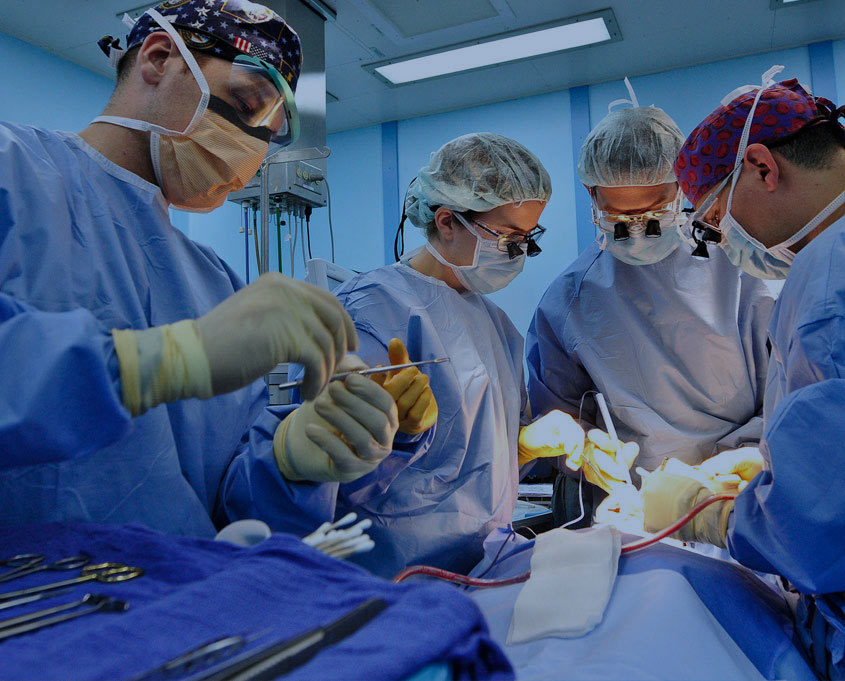Above: Early Greek traction device in the 2nd century A.D.
Traction vs. Spinal Decompression
Spinal traction is a form of decompression therapy that relieves pressure on the spine. It can be performed manually or mechanically.
Like Spinal Decompression Therapy, spinal traction is used to treat herniated discs, sciatica, degenerative disc disease, pinched nerves, and many other back conditions.
However, Spinal Decompression therapy is different and far more advanced than traction.
What is the Difference between Spinal Decompression and Traction?
Traction
Regular traction stretches your spine and muscles simultaneously. But if you only stretch the spine, your body naturally “braces” for the next stretch, limiting the effectiveness of the treatment. The “overall stretching” commonly used in traction can also trigger painful muscle spasms.
Spinal Decompression
On the other hand, Spinal Decompression therapy is different from conventional spinal traction because it alternates between stretching and relaxation.2,3 The relaxation stages trick your body into staying relaxed and therefore maximizes the load and the effectiveness of the treatment.
At Florida Spine and Disc in Naples, FL, our Decompression table allows our doctors to target your treatment area in three different dimensions. This allows us to target our treatment by isolating specific spinal discs, compared to traction, which often just “stretches” the entire spine.1
We can also completely customize your decompression treatment by changing the amount of stretch (load); the number of stretch/relax stages; the time it takes to reach each peak stretch/relax stage; and many other settings.
These options allow us to personalize the session for your age, weight and condition and to adjust your treatments as we track your results.
What makes Spinal Decompression work where Traction has failed?
Negative Pressure
While traction may reduce disc pressures to as low as 40 mm Hg, only Spinal Decompression has been shown to achieve negative pressures within the spine. It has been clinically proven that spinal decompression creates negative pressures as low as -110 mm Hg3 within the injured disc during the treatment session.
Muscle Guarding and Spasms
Normally, pulls exerted on the spine trigger sensory receptors in the back to tighten the muscles surrounding the vertebrae and discs in an effort to protect them from injury, a mechanism in the body known as the proprioceptor response. This typically includes muscle guarding and muscle spasms. Spinal Decompression bypasses this response by slowly pulling on the spine and relaxing the back over an extended period of time, allowing the discs to be repositioned without tension and without setting off muscle guarding and spasms.
At Florida Spine and Disc in Naples, FL, we treated our patients on a high-quality spinal decompression table. Our doctors have years of experience to ensure best results.
What does the research say?
A study divided patients with ruptured discs and facet arthrosis into two groups: traditional mechanical traction and spinal decompression.4
The results?
Traction
The traction group didn’t obtain an excellent result in patients with ruptured discs while only 50% of patients with facet arthrosis had good to excellent results.
Spinal Decompression
The Spinal Decompression therapy group had good to excellent pain relief in almost 86% of patients who had ruptured discs and 75% in patients with facet arthrosis.
Currently, spinal decompression is being evaluated as the first line of treatment in cases of low back pain.
Spinal Decompression Therapy in Naples, FL
Spinal decompression therapy is now available in Florida Spine and Disc of Naples, FL. We provide this service to people who are suffering from back pain. After Spinal decompression therapy, research shows that patients are able to resume about 89% of previous activity.
Prior to treatment, it is necessary to see our chiropractors first. Your chiropractor will assess your condition and will discuss the plan of care.
Kindly contact us for more information. We would be glad to hear from you soon. Let’s work hand in hand for you to have a life away from pain.
REFERENCES:1. Decompression: A Treatment for Back Pain, Occupational Medicine Clinical Care Update, Volume 11, Number 10 October 2004
2. Ramos,G. and Martin, W. Effects of vertebral axial decompression on intradiscal pressure J Neurosurgery, 81: 350-353 1994
3. Shealy, C.N. and Leroy, P. New concepts in back pain: decompression, reduction, and stabilization Weiner Red. Pain Management: A Practical Guide for Clinicians, Boca Raton Fla: St. Lucie Press, 239-257 199
4. C. Norman Shealy, MD, PhD. Decompression, Reduction, and Stabilization of the Lumbar Spine: A Cost Effective Treatment for Lumbosacral Pain. April 7997. Vol. 7, NO.2.
Wikipedia [Public domain], from Wikimedia Commons




